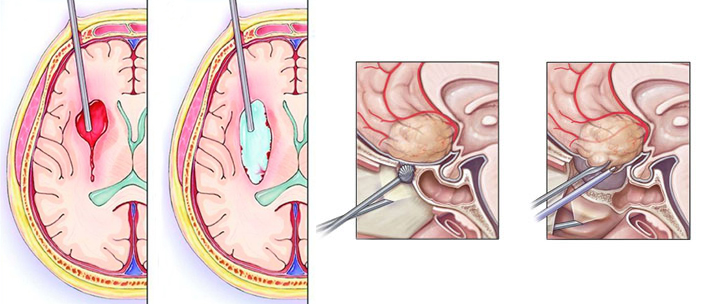Services

Neuro Endoscopic Surgery
Neuroendoscopy allows surgeons to reach tumors and other problem areas previously considered inoperable due to their position inside the skull.
Since neuroendoscopy may be performed through natural body openings, such as the nose, there is no need for large incisions. The likelihood of unsightly scars is reduced. An example is endonasal neurosurgery or endoscopic endonasal approach (EEA), which is a minimally invasive surgery performed through the nasal cavity to reach brain tumors inside the skull. If small incisions are needed, your neurosurgeon often can hide them in the hairline or behind the ear to hide any scars.
Procedure & Recovery
Neuroendoscopy typically takes place within a hospital and often requires at least an overnight stay for monitoring. Some procedures can be performed in ambulatory surgical centers and you can go home the same day.
With EEA, you may feel only mild sinus discomfort after the procedure. For surgeries involving small incisions in the scalp and the bone of the skull, you’ll be given pain medicines to keep you comfortable after the procedure.
One of the many benefits of neuroendoscopy is its lower rate of complications compared to open surgery with a larger incision. Although there are risks, the benefits of surgery outweigh potential complications in many cases. Your surgeon and care team will answer any questions you have about your surgery.
